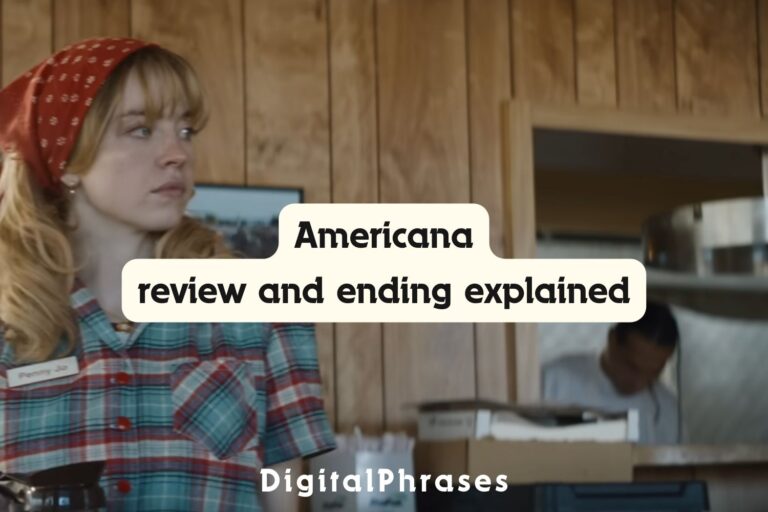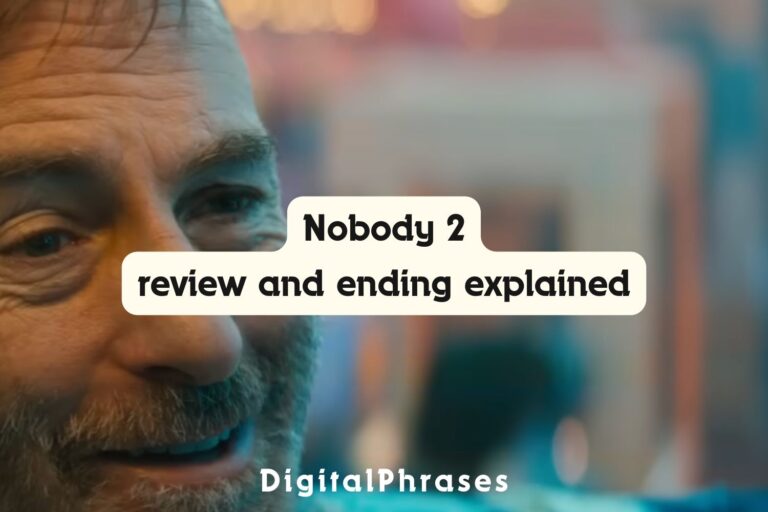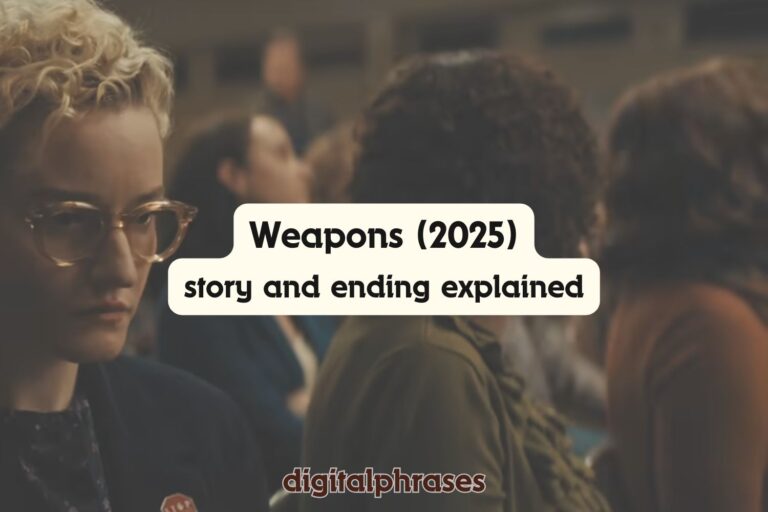Freakier Friday Review and Ending Explained
Freakier Friday is the kind of sequel I didn’t know I wanted but was secretly hoping for. Directed by Nisha Ganatra, written by Jordan Weiss, and bringing back Lindsay Lohan and Jamie Lee Curtis after more than two decades, the film leans into nostalgia while still finding fresh ways to spin the body-swap chaos.
It’s a high-concept comedy with heart, and it lands that tricky balance of giving older fans something to chew on while introducing a new generation to the magic of role reversals gone awry.
Story Synopsis and Review
So, let’s unpack the story and—more importantly—the ending, because there’s a lot more going on here than just people waking up in the wrong bodies.
The story picks up 22 years after the 2003 remake. Anna Coleman (Lohan), now in her 30s, is a single mom raising her teenage daughter, Harper.
Anna has traded her youthful rock star ambitions for a career as a music producer, but her world gets shaken when she falls in love with Eric, a charming British single dad whose daughter Lily is Harper’s new classmate—and future stepsister.
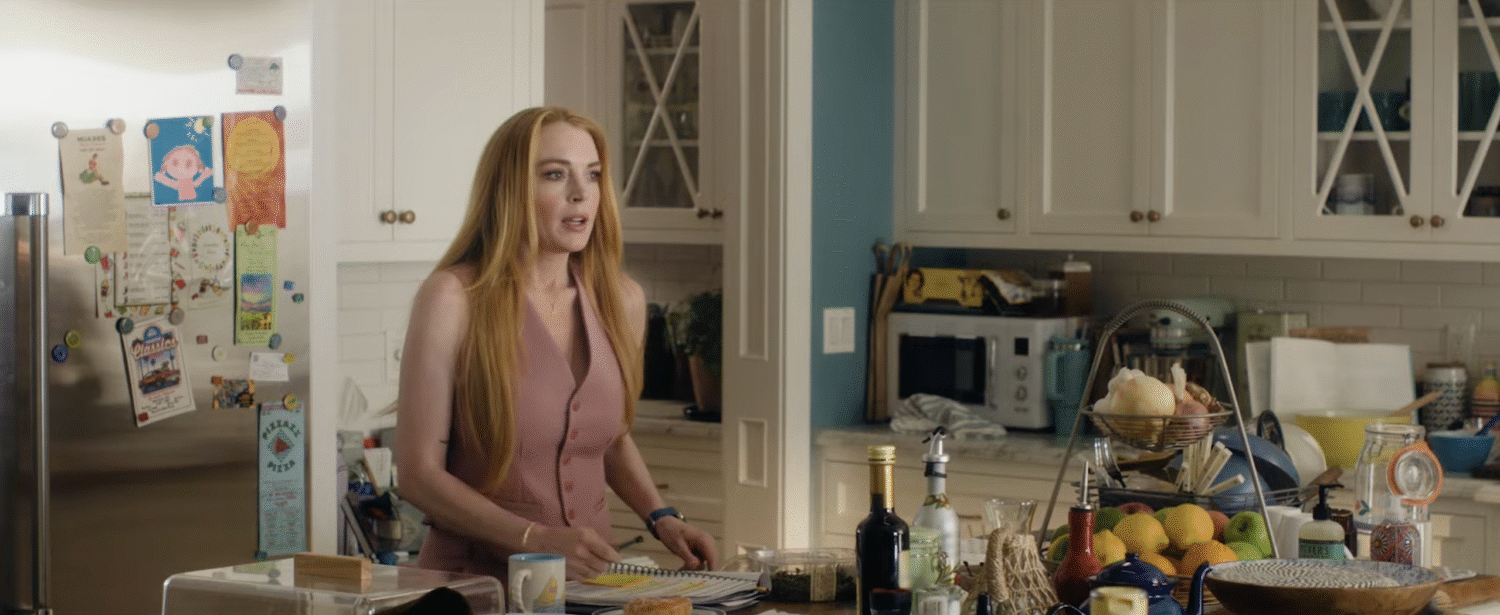
Naturally, Harper and Lily clash right away. Harper thinks Lily is a snob, and Lily thinks Harper is an immature mess.
This friction sets the stage for the central conflict: the merging of two families who don’t actually want to merge.
What’s clever here is that the film doesn’t just recycle the Anna-and-Tess swap from the original. Instead, we get two simultaneous swaps: Anna with Harper, and Tess with Lily.
It’s a doubling of the premise, which on the surface could sound gimmicky, but it actually creates fascinating narrative layers. You’ve got generational tension (grandmother to teenager), familial tension (mother to daughter), and cultural tension (American to British).
The movie mines comedy out of all those angles, but it also uses the swaps to say something deeper about identity, grief, and the messiness of blending families.
The inciting incident is classic Disney absurdity. During Anna’s bachelorette party, Harper and Lily, along with Anna and Tess, get readings from the same psychic, Madame Jen.
There’s a cryptic fortune, an earthquake that only they feel, and then—bam—they wake up in the wrong bodies. The psychic, played with a wink that makes you think she knows more than she’s letting on, essentially becomes the catalyst for everyone’s journey of self-discovery.
Where this sequel distinguishes itself from the 2003 version is in the stakes. In the first film, the swap was about a mother and daughter understanding each other’s struggles.
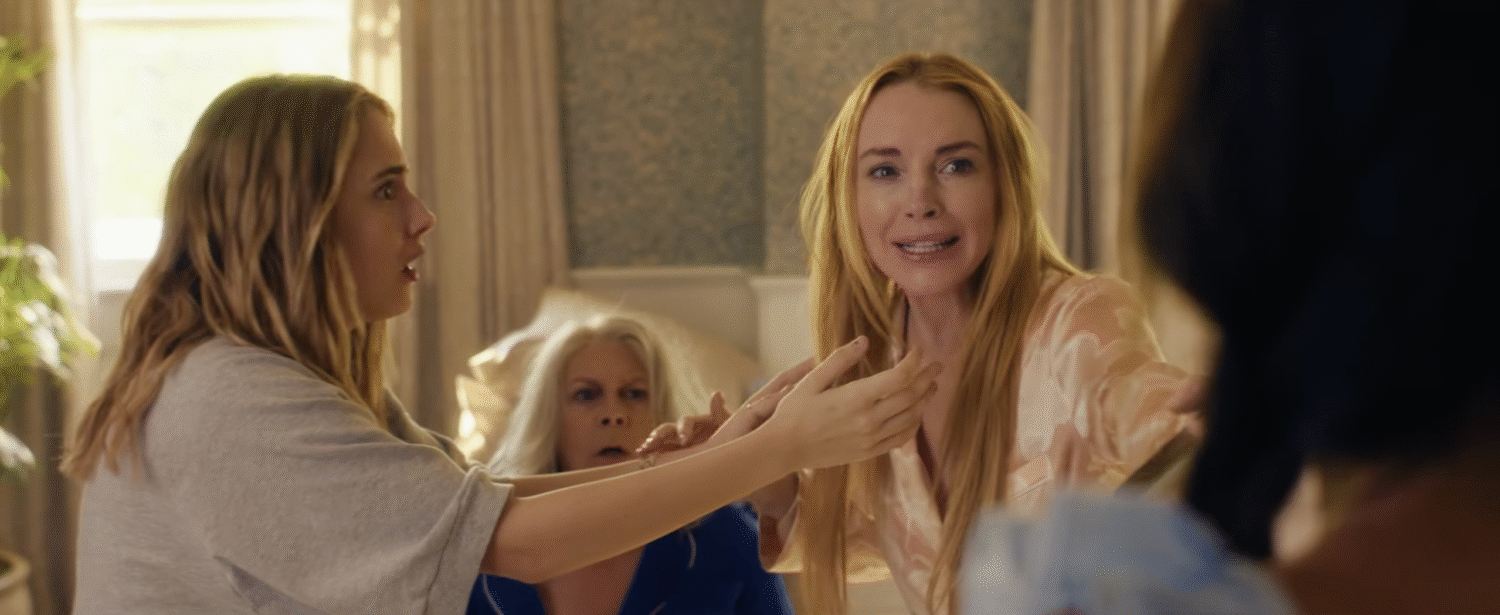
Here, the swap has broader repercussions: the survival of Anna and Eric’s relationship, Harper’s fears about losing her mom, Lily’s lingering grief over her late mother, and Tess trying to keep her family grounded through it all.
Suddenly, the comedy is intertwined with very adult anxieties—immigration interviews, blended family dynamics, unprocessed grief—which makes the emotional payoff hit harder.
Of course, Harper and Lily initially see the swap as a golden opportunity to sabotage the wedding. In their minds, breaking up Anna and Eric means avoiding the nightmare of becoming stepsisters.
But here’s the film’s smartest move: by living in their mothers’ bodies, they’re forced to witness the sacrifices and choices that shaped them.
Harper learns that Anna gave up her music career not out of failure, but out of love for her daughter. Lily learns how much Tess cares for family and stability, and how hard it is to hold everything together.
The lies they spin to prolong the swap slowly crumble under the weight of truth.
Ending Explained
This brings us to the ending, which I think is one of the most satisfying “switch back” sequences I’ve seen in a body-swap comedy. After Harper and Lily’s sabotage backfires—culminating in a disastrous rehearsal dinner where tensions explode—Eric calls off the wedding.
At this point, it seems like the family is fractured beyond repair. But then comes the concert scene, which is pure Disney magic.
Anna (in Harper’s body) is invited to a concert by Ella, one of her clients, who also happens to be a teen pop star struggling with a breakup. Ella invites Anna’s old band, Pink Slip, to reunite on stage, and Anna is forced to face the dreams she once left behind.

Here’s where the film cleverly ties everything together. Harper, inside Anna’s body, realizes the “love song” she found wasn’t about Jake Austin (the high school flame) but about her.
Anna had written it for her daughter. That revelation reframes everything.
Anna didn’t abandon her passion—she redirected it. Harper wasn’t an obstacle; she was the muse.
It’s in this moment, on stage, that Harper and Anna reconcile, performing together and affirming their bond. Lily and Tess arrive in time to see it, and Lily, softened by Tess’s maternal wisdom, admits she wants to be part of this family.
The “change of heart” the psychic mentioned finally happens—not through a ritual, but through emotional growth. Only then do they switch back to their original bodies.
But the film doesn’t stop there. Eric returns, moved by everything, and he and Anna reconcile, leading to a heartfelt wedding where the whole family—messy, mismatched, but united—celebrates together.
And in true Freaky Friday fashion, there’s one last comedic sting. Tess discovers Lily (while in her body) approved a ridiculous book cover with exaggerated lip plumper.
It’s a small gag, but it reminds us that even after growth and catharsis, life (and family) is never perfect.
What really works about this ending is how it mirrors the 2003 film’s central theme of empathy but expands it. The earlier movie was about a mother and daughter seeing eye to eye.
This sequel is about four people, across generations and cultures, learning to let go of their selfishness and embrace vulnerability.
It’s not just about walking in someone else’s shoes. It’s about confronting the baggage they carry in those shoes.
From a cinephile’s perspective, I love how Freakier Friday pays homage to high-concept comedies of the late 90s and early 2000s. Movies like Liar Liar, 13 Going on 30, and even Bruce Almighty used fantastical premises to explore relatable emotional truths.
We don’t get those mid-budget, high-concept studio comedies anymore—at least not with this kind of sincerity. Watching this felt like stepping back into an era where studios trusted audiences to buy into a goofy premise because they knew the heart would sell it.
And for anyone who worried about bringing back Lohan and Curtis, the film proves their chemistry is still electric. The body-swap moments between them work just as well as they did 22 years ago, maybe even better because they’re now reflecting on decades of lived experience.
Adding Julia Butters as Harper was a stroke of genius too. Her comedic timing and emotional range give the movie a jolt of youthful energy.
So when I look at this film’s ending, I don’t just see a happy family reunited at a wedding. I see a quiet commentary on the evolution of Disney live-action films, the persistence of high-concept comedy, and the timelessness of empathy as a storytelling device.
The body swap is just the vehicle. The real journey is learning to forgive, to honor sacrifices, and to embrace the messy, unplanned families we end up with.
And honestly?
That’s why this movie works. It knows it’s silly, it knows it’s nostalgic, but it never underestimates its audience.
It invites us to laugh at the chaos and still walk away thinking about our own families, our own compromises, and maybe even our own unfulfilled dreams.
That’s not just a sequel cashing in on nostalgia. That’s storytelling that earns its ending.



